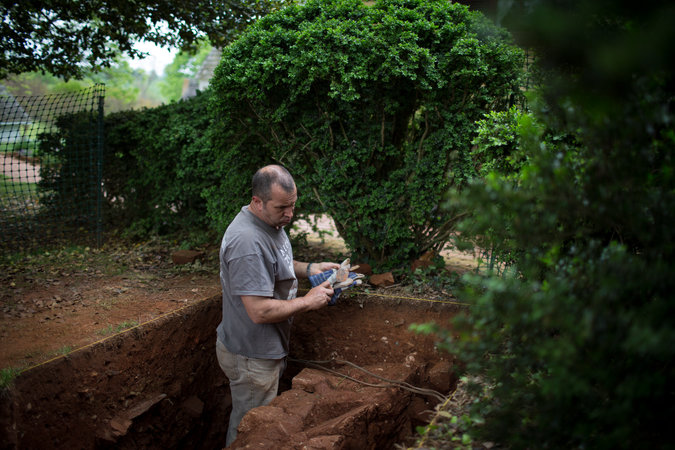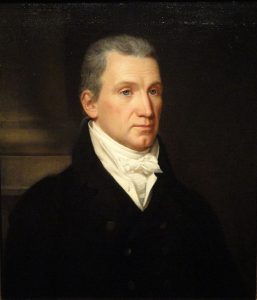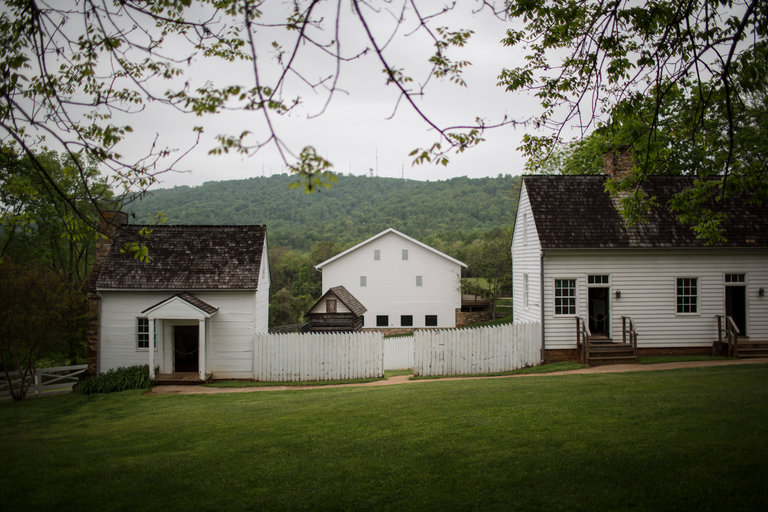“What we saw before us, as well as his modest prose about his ‘cabin-castle’ — we bought it…We bought it for over a century.” – Bon-Harper, executive director of Highland

PHOTO: nytimes.com
The pretty picture painted by tour guides at Highland, the United State’s Fifth President’s home, has been recently, embarrassingly shattered by archaeologists doing some recent explorations in the area. The discovery is so earth-shattering to the picture of Highland that’s been the reigning view for decades that tours have been completely halted for revision and reflection.

PHOTO: wikimedia
James Monroe, the owner of Highland, was president from April 2, 1811, to March 4, 1817. He held more elected offices than any other president. He traveled to France and negotiated the Louisiana Purchase, and his famous “Monroe Doctrine”, which declared the Western Hemisphere off-limits to European meddling has been the basis for much of the United State’s foreign policies. He entered the presidency as a Revolutionary War hero with a bullet wound in his shoulder from the Battle of Trenton.
For years, it was thought that James Monroe lived very modestly for his station in a two-room, one story, humble cottage that he called his “cabin-castle”. This narrative was called into question when the examination of some insurance sketches and old newspaper clippings hinted at a large house. In light of the paperwork, Ms. Bon-Harper, executive director of Highland decided to have scientists really delve into the property’s history.
Two years ago, in 2014, she hired Rivanna Archaeological Services to start examining the site of Highland. They began probing the ground and taking samples, looking for any traces of this bigger house the paperwork talked about. It wasn’t long until they found some.
They found architectural debris: broken pieces of window pane glass, nails, mortar and brick. All were artifacts that suggested that there should be a structure nearby.
Further digging proved that the cottage they thought the Monroes were living in had to have been built after they moved in to the estate. Studies of the cottages framing showed that the wood was dated to 1818, which matched a letter Monroe penned during his first term in office about a guesthouse.
More digging around revealed an entire foundation that was much larger than the building previously thought to be Monroe’s house. The site yielded a fieldstone foundation with a footprint of 74 by 30 feet. This was the main house on the Monroe estate. Monroe’s actual home was a lavish mansion, and the dinky house that everyone thought he was living in was just the guesthouse.

PHOTO: nytimes.com
Monroe owned many plantations like Highland, including Oak Hill, Monroe Hill, and Aldie. He owned a good deal of slaves, most of which were treated badly because Monroe was never home to notice. The whole point of his plantations was to bring in money, and no matter how hard the plantation overseers worked the slaves, they were barely managing to break even. The idea that Monroe lived in a huge mansion at Highland seems odd, considering he was plagued by financial troubles for a good part of his life. He racked up debt during his years of public life and was forced to sell Highland to try and pay off its debts. The property was later donated to his alma mater, the College of William and Mary, who opened it to the public as a historic site.
The property of Highland is adjacent to Thomas Jefferson’s home, Monticello, and receives only a tenth of its neighbor’s traffic. Monroe was lured to the area by Jefferson, who was his political mentor. Jefferson asked him to come live there in a letter written in 1876, asking him “to create a society to our taste”. Unfortunately, it was a lavish lifestyle that Monroe just couldn’t afford.

